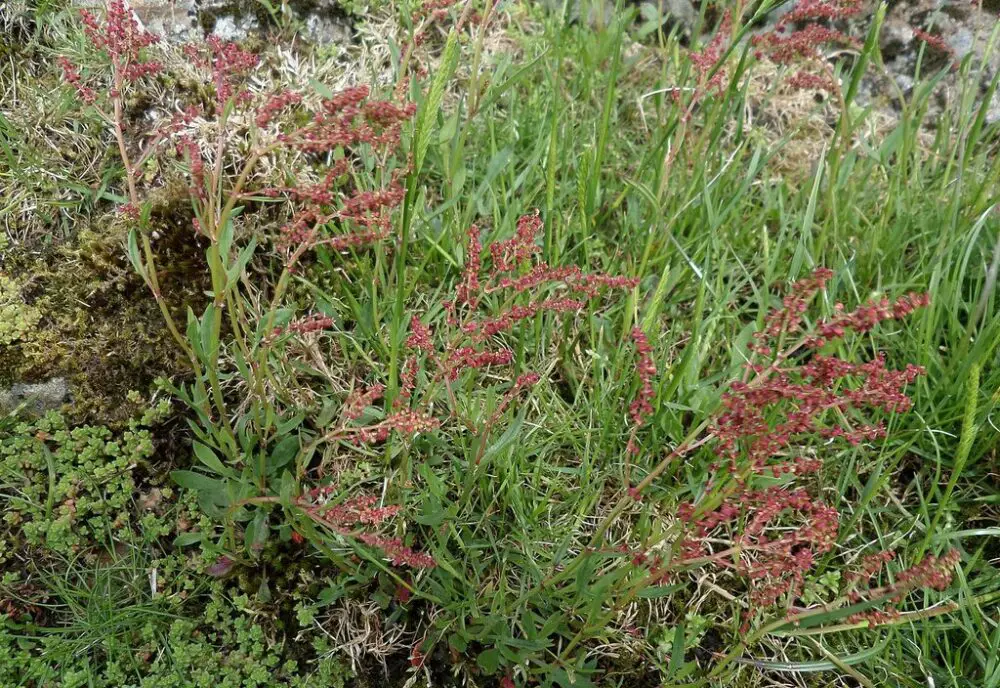Despite its reputation as a noxious weed - with 45 of the 50 states reporting it as an invasive plant, sheep's sorrel has a long-standing reputation as a beneficial herb. The sheep's sorrel plant is primarily grown for its leaves which are used in salads and cooking, and as medicinal herb.
| Scientific name | Rumex acetosella |
| Family | Polygonaceae (buckwheat family) |
| Plant type | Herbaceous perennial herb |
| Kingdom | Plantae |
Common names include:
- red sorrel
- sheep’s sorrel
- common sheep sorrel
- field sorrel
- sour weed
Where does sheep’s sorrel grow?
Sheep’s sorrel is a widespread flowering plant throughout much of North America, usually found along roadsides and in degraded fields and prairies.
In heathlands and grasslands, it is commonly found growing on sandy acid soils. In particular, it prefers to grow where blueberries can be found.
What Are You Foraging For Right Now?
We're thrilled to hear your ideas. What would you like to submit today? Feel free to share your thoughts and experiences with us.
How do you identify sheep’s sorrel?
Typically 2′ tall, sheep’s sorrel leaves are arrowhead-shaped, with long, spike-like, terminal clusters of greenish flowers turning red as they age. Stems are upright, branched at the top, slender, and reddish.
Simple, arrow-shaped leaves are smooth, 1-3” long, and have horizontal lobes at the base.
Plants have clusters of green, red, or rust-brown flowers whose spikes can produce a somewhat showy effect.
The plant produces flower stalks from rosette-like basal leaves that span about 4-6″ across, while the flowering stalks are about ¾–1½’ tall and erect. On these stalks, there are a few alternate, lanceolate, or linear leaves that are sessile and small in size.

Sheep’s sorrel is a dioecious plant, meaning the flowers are either all male or all female. Female flowers have a pistil with a white tripartite style. Each flower is about 1/12″ (2 mm.) across, has six sepals, and has no petals.
As the flowers bloom and the achenes mature, the 3 outer sepals do not develop membranous wings, unlike some other sorrel species. The achene has three angles, and its surface is shinier rather than granular.
The sepals are the same length as the achene but do not fully enclose it. A shallow taproot and long rhizomes form the root system. It often forms vegetative colonies.

What is sheep’s sorrel good for?
Sheep’s sorrel is used to treat:
- inflammation
- scurvy
- cancer
- diarrhea
It is also a principal ingredient in Essiac, an alternative cancer treatment. The major constituents include anthraquinones and oxalates.
To increase urine production by the kidneys, herbalists recommend consuming fresh sorrel leaves as a mild diuretic.
Tea brewed from sheep’s sorrel leaves is considered an anti-inflammatory herbal remedy for fever and generalized inflammation.
Sorrel tea is also used in herbal medicine, primarily to treat menstrual problems.
In addition to its high vitamin C content, sorrel preparations are also recommended to prevent scurvy, which is caused by a vitamin deficiency.
Sheep’s sorrel contains antioxidant flavonoids that help eliminate potentially harmful free radicals from the body.
Free radicals can damage your cellular membranes and DNA, increasing your risk of cancer, heart disease, and other illnesses. By stabilizing free radicals, antioxidants enable your body to eliminate them on its own.
Additionally, the Memorial Sloan-Kettering Cancer Center reports that sheep’s sorrel contains anthraquinones, stimulating muscular activity and fluid secretion in your intestines, thereby preventing constipation.
Sheep’s sorrel contains vitamins and nutrients and can treat Salmonella, E-coli, and Staph infections.
Is sheep’s sorrel toxic in any way?
If taken in large quantities, sheep’s sorrel may cause abdominal cramps, stomach pain, or diarrhea.
Because sorrel is high in oxalates, a chemical that contributes to kidney stones, it should not be consumed by those with kidney stones.
How do you eat sheep’s sorrel?
The leaves and the roots are edible. The roots can be used in a variety of dishes, such as salads or stir-fry dishes with peppers and onions.
Salads, soups, omelets, and sauces commonly contain the leaves, which have a tangy, acidic, sour-lemony flavor.
The best tasting leaves are those that are young.
Ana has always been interested in all things nature and flora. With her expertise in home gardening and interest in foraging, she has been spending her weekends and free time looking for edible native plants, flowers, and fungi. One of her many hobbies includes testing new savory and sweet recipes, juices or teas made from freshly picked plants, wild fruits, or mushrooms.

